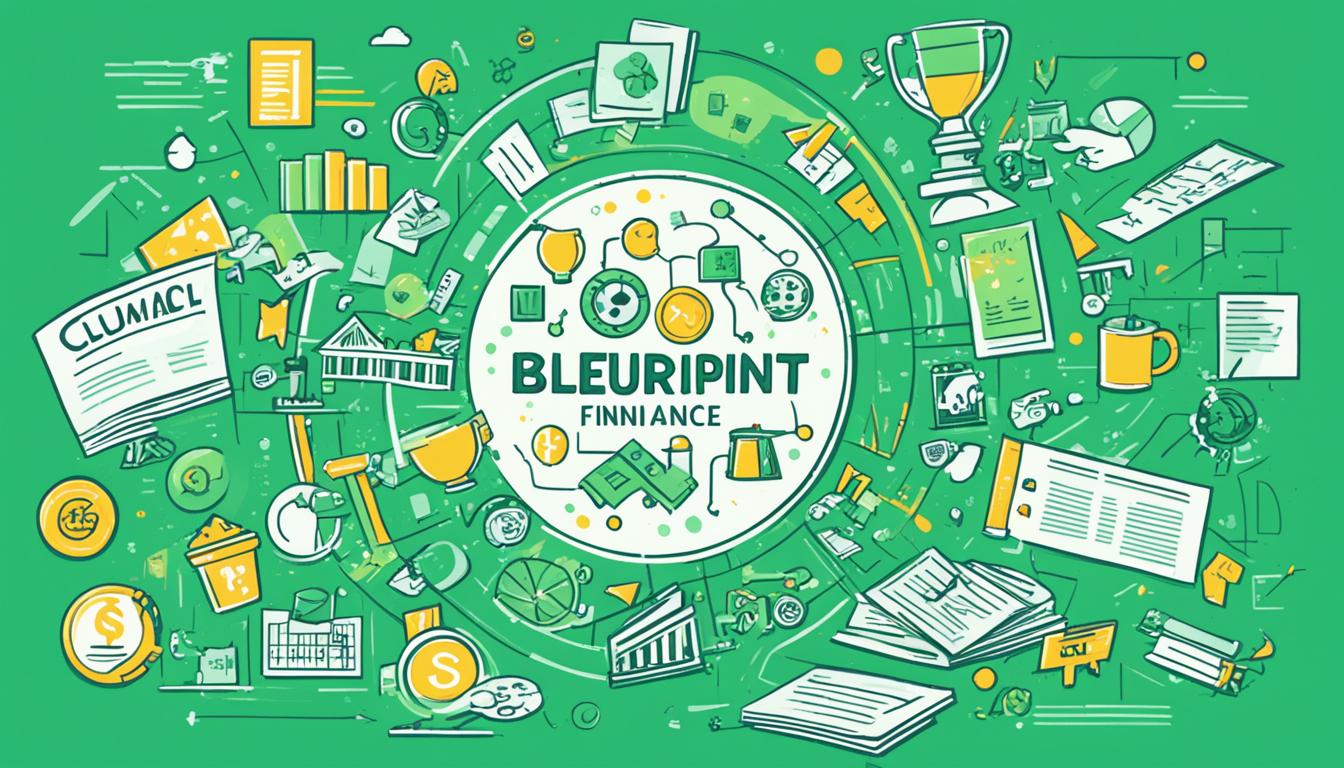The film industry’s vivacity stems from a well-oiled financial system, an intricate web of film finance options essential to turning creative ideas into gripping filmic stories. With the dynamics of film investment continuously evolving, understanding how do films get funded is pivotal for anyone looking to break into this high-stakes arena or simply nurse a burgeoning cinematic dream to life. In South Africa’s varied landscape, where compelling narratives abound, the journey from script to screen is a challenge surmounted through diverse movie funding sources and strategic film financing tips. Here, we imbibe the essence of what breathes financial vitality into projects, from indie flicks to box office titans.
Knowing the pathways to funding is not merely about accessing capital; it’s about weaving a storyline that seduces funders, aligns with regulatory frameworks and taps into the rich tapestry of film financing tips while appreciating local nuances. The mechanism of film funding is not simply transactional; it is as creatively demanding and nationally significant as the art of filmmaking itself.
Key Takeaways
- Film finance is the cornerstone of turning scripts into viewable, marketable films.
- Varied film finance options include governmental support, private investment, and innovative methods like crowdfunding.
- Real-world film financing tips are pivotal in crafting a compelling pitch to prospective investors.
- Understanding how films get funded requires a grasp of the economic and regulatory climates of the film industry.
- Movie funding sources are rich and varied, offering multiple avenues for filmmakers.
- The South African film sector offers unique opportunities for leveraging local narratives in securing film financing.
The Intricacies of Film Funding
Navigating the multifaceted world of film investment strategies presents a range of challenges and opportunities. The landscape of film production funding is robust and dynamic, offering a multitude of pathways for raising money for films. In this exploration, we delve into the crucial elements that constitute the finance framework of the film industry.
Understanding the Film Financing Ecosystem
The fabric of film financing is woven from a complex mesh of financial contributions, investor confidence, and strategic foresight. Film funding is a crucial stage in birthing cinematic ventures, whether they are ambitious blockbusters or heartfelt indie films. Recognizing the roles and interplay of various entities within this ecosystem is paramount for filmmakers and investors alike.
Diverse Sources of Movie Funding
Funding for films can be sourced through a variety of channels. Independent projects may seek traditional funding routes such as loans and equity investment, while others may leverage government grants and tax incentives. Film production funding further extends to more contemporary models like crowdfunding, which democratizes the investment process and uncovers a more engaged audience base.
For instance, consider a film that melds creative storytelling with marketable elements, attracting the right mix of financial backing. The approach to film production funding is often a carefully curated blend, designed to mitigate risk while promising an attractive return on investment. The integration of these diverse funding avenues diversifies financial sources, enhancing a project’s potential for success.
Role of Film Production Services
At the heart of this finance tapestry are the film production services—key players that bridge the gap between creative concepts and tangible funding. These entities are proficient in strategizing bespoke financing solutions, compiling resources from private and public sectors to construct a solid financial foundation for film projects.
These services advocate for the film, enticing financiers with a vision that is both artistically sound and financially viable. They are a testament to the power of collaboration and strategic planning, tirelessly working to turn a screenplay into a fully realized cinematic experience.
Film financing tips often point towards the importance of understanding each potential revenue stream and aligning them with the overarching goal of the production. As such, film production services not only perform a facilitatory role but also an advisory one, guiding filmmakers through the intricate dance of raising capital for their creative endeavors.
How do Films Get Funded?
Delving into the enigmatic world of film financing reveals a complex web of strategies and sources that collectively answer the perennial question: how do films get funded? At the heart of film finance options lie a combination of resources that drive the industry’s creative engines, ensuring that every script has a fair shot at becoming a silver screen sensation.

Successful film production often relies on a rich tapestry of funding avenues, ranging from traditional to innovative, to gather the necessary capital for a movie to go from development to distribution. We outline some of the most reliable film finance options:
- Government Programs: Incentives such as those provided by the South African National Empowerment Fund play a crucial role in funding, especially for local productions seeking to highlight indigenous stories.
- Private Investments: Angel investors and film finance companies often offer significant contributions, investing in potential box-office successes and high-opportunity indie films.
- Pre-sale Agreements: Selling the rights to distribute a film in certain regions before the film is completed can secure early financing and reduce investment risk.
- Tax Incentives: Rebates and incentives can make certain locations financially attractive for filmmakers, effectively lowering production costs.
- Crowdfunding: Platforms like Kickstarter allow filmmakers to connect directly with their audience, gathering funds and building a fan base simultaneously.
“Each film’s journey through the labyrinth of fundraising is as unique as the story it aims to tell, reflecting the tenacity and creativity of the filmmakers at its helm.” – Industry Expert
Here’s a snapshot of how these diverse sources form the financial backbone of films:
| Funding Source | Advantages | Challenges |
|---|---|---|
| Government Programs | Sustainability and cultural support | Navigating bureaucracy and fulfilling criteria |
| Private Investments | Larger capital sums | ROI expectations and creative control |
| Pre-sale Agreements | Early financial security | Market predictions and rights management |
| Tax Incentives | Reduced costs | Geographical and expenditure limitations |
| Crowdfunding | Community engagement | Meeting funding goals and reward obligations |
As we scrutinize the diverse tapestry of film finance options, it’s palpable that the sector requires ingenuity and strategic insights into how films get funded. The resilience and innovative spirit of South Africa’s film industry continues to thrive under this multifaceted approach, which has proven to effectively harness a blend of local and global financial support.
Conclusion
In retrospect, the film industry’s financing landscape has been a canvass for innovative and adaptive strategies. As exemplified by productions like ‘Knuckle City,’ successful film investment strategies involve a dynamic blend of commercial viability, creative expertise, and strategic alliances. These partnerships, with entities such as the National Empowerment Fund and the Department of Arts and Culture, have not only catalyzed the realization of visionary projects but have also underpinned economic and cultural growth in South Africa.
Case Studies of Successful Film Financing
‘Knuckle City’ stands out as a beacon of successful film production funding, demonstrating the profound impact of a comprehensive and inclusive approach to securing investment. The film’s accomplishment underscores the importance of empowerment dividends and the remarkable influence that collaborative funding efforts can have on both local economies and the international film landscape. It is a quintessential case study that reflects the efficacy of blending artistic aspiration with financial acumen.
Emerging Trends in Film Funding
The advent of crowdfunding for films has been a game-changer, democratizing the process by which projects access capital, while simultaneously fostering a more intimate connection between filmmakers and their audience. With the emergence of such trends, alongside the growing significance of digital distribution channels, film production services are challenged to remain flexible, capitalizing on these film financing tips and alternative models that promise to reshape the industry.
The Future of Film Finance Strategies
Looking ahead, the future of film funding hinges on continuous innovation and the embracing of novel finance options. This may include leveraging digital revenue streams and exploring fresh investment models that cater to a globally interconnected marketplace. As consumer behaviors and technological landscapes evolve, film production services are tasked with pioneering groundbreaking strategies to aid creative endeavors, ensuring the sustainability and evolution of cinema as a compelling form of storytelling.
FAQ
What are some common strategies for film financing?
Common strategies for film financing include securing private investments, utilizing government funds and tax incentives, engaging in pre-sales and licensing, pursuing grants, and developing relationships with film production companies that can facilitate the process. New methods such as crowdfunding are also becoming increasingly popular.
What roles do film production services play in funding a film?
Film production services are pivotal in connecting filmmakers with potential funding sources. They draw up comprehensive financing plans, assist with crafting persuasive pitches to investors, and often have deep networks within the industry to facilitate introductions. Their expertise can guide filmmakers through the complex process of piecing together the various elements needed to fund a film.
Can you crowdsource funding for a film?
Yes, crowdsourcing, or crowdfunding, has emerged as a viable means to raise money for films. Platforms like Kickstarter, Indiegogo, and GoFundMe allow filmmakers to pitch their projects directly to the public, offering rewards in exchange for financial contributions. This method not only raises funds but can also help build a community of supporters around a film.
How do tax incentives contribute to film funding?
Many regions and countries offer tax incentives to filmmakers as a way to stimulate local economies and promote cultural products. These incentives can significantly reduce the cost of production as they may provide rebates, tax credits, or deductions on expenditures incurred within the jurisdiction, thus becoming a crucial element of financial strategies for film projects.
What are pre-sales, and how do they factor into movie funding?
Pre-sales involve selling the distribution rights for a film in different territories prior to its completion. This method provides early-stage funding and can help to offset production costs. Pre-sales agreements are attractive to investors, as they offer tangible evidence of a film’s commercial viability and potential return on investment.
What impact do government funds have on film funding?
Government funds can provide substantial support for film projects. These funds could be in the form of direct grants, loans, or incentives designed to encourage the growth of the local film industry. Funding from government bodies often comes with certain qualifications and expectations, such as portraying cultural narratives or meeting specific production criteria.
What investment strategies are commonly used in successful film financing?
Successful film financing often involves a mix of investment strategies, including equity investment, where backers provide funding in exchange for a share of the profits, mezzanine financing, which is a hybrid of debt and equity, and gap financing, which covers the shortfall between the film’s total budget and the amount raised by other means. Astute financial planning and a strong pitch are also integral to attracting and securing investment.
How are digital distribution platforms affecting film funding?
Digital distribution platforms are opening new avenues for film funding, allowing filmmakers to access a global audience and potentially secure upfront payments or partnerships with platforms for exclusive streaming rights. The presence of these platforms can also inform marketing strategies and help generate buzz and interest in a film, which can be persuasive to investors.
What does the future hold for film funding strategies?
The future of film funding is likely to involve a greater use of digital and social media platforms, a continued rise in crowdfunding, and an exploration of alternative investment models like blockchain technology and fan-based investments. The industry will need to adapt to new consumer behaviors, technological advancements, and shifts in how content is distributed and consumed.






